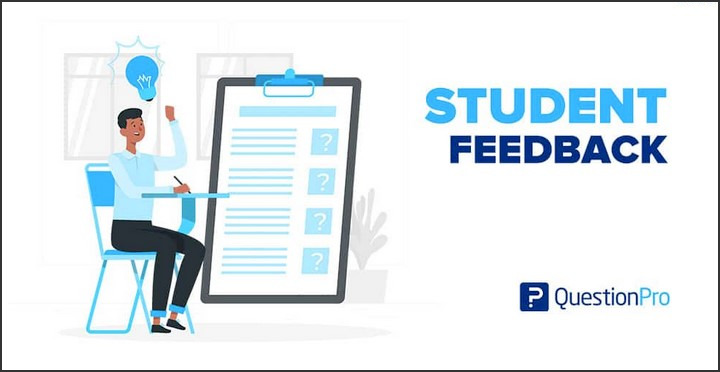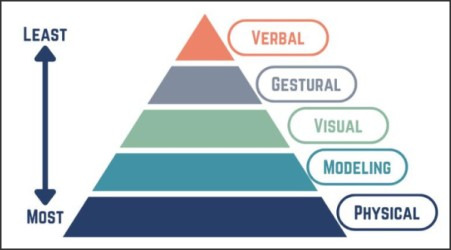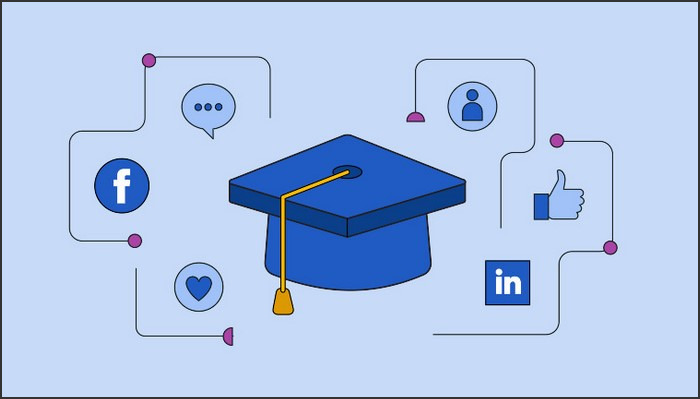Marriott Teacher Discounts: Saving on Travel

Source : https://lirp.cdn-website.com
Marriott Teacher Discounts are a great way for teachers to save on travel. Whether you’re looking for a weekend getaway or a longer vacation, Marriott offers discounts on hotel stays, car rentals, and more. With Marriott’s Teacher Discounts, teachers can save up to 25% on their travel expenses. With a variety of locations and amenities, Marriott is the perfect choice for teachers looking to save on their next trip.
How Marriott Teacher Discounts Help Educators Save on Vacations
Marriott International offers a special discount program for teachers, allowing them to save on vacations and other travel expenses. This program is designed to recognize and reward educators for their hard work and dedication to their students. With the Marriott Teacher Discounts program, teachers can save up to 25% on their stays at participating Marriott hotels and resorts.
The Marriott Teacher Discounts program is available to all teachers, including those who are employed by public or private schools, universities, and other educational institutions. To qualify, teachers must provide proof of their current employment status. Once approved, teachers can enjoy discounted rates on their stays at participating Marriott hotels and resorts.
The Marriott Teacher Discounts program offers a variety of benefits to educators. For example, teachers can save on their stays at participating Marriott hotels and resorts, as well as on their meals and other amenities. Additionally, teachers can take advantage of special offers and promotions, such as free Wi-Fi, complimentary breakfast, and more.
The Marriott Teacher Discounts program is a great way for educators to save on their vacations and other travel expenses. With the discounted rates and special offers, teachers can enjoy a relaxing and enjoyable stay at a Marriott hotel or resort without breaking the bank. This program is a great way for educators to show their appreciation for their students and to reward themselves for their hard work.
Exploring the Benefits of Marriott Teacher Discounts for School Trips and Professional Development
As educators, we are constantly looking for ways to provide our students with the best possible learning experiences. Marriott International offers a variety of discounts for teachers and school groups that can help make school trips and professional development more affordable. By taking advantage of these discounts, teachers can provide their students with unique learning opportunities and help their school save money.
Marriott offers discounts for teachers and school groups that can be used for both school trips and professional development. For school trips, teachers can receive discounts on hotel rooms, meals, and other amenities. This can help make school trips more affordable and allow teachers to provide their students with a more enriching experience. For professional development, teachers can receive discounts on conference rooms, meeting spaces, and other services. This can help teachers save money on professional development and allow them to attend more conferences and workshops.
In addition to the discounts, Marriott also offers a variety of other benefits for teachers and school groups. For example, Marriott offers a rewards program that allows teachers to earn points for every dollar spent. These points can be used to redeem free nights, discounts, and other rewards. Marriott also offers a variety of special offers and promotions that can help teachers save even more money.
Overall, Marriott offers a variety of discounts and benefits for teachers and school groups that can help make school trips and professional development more affordable. By taking advantage of these discounts, teachers can provide their students with unique learning opportunities and help their school save money.Marriott Teacher Discounts offer a great way for teachers to save on travel. With discounts of up to 25% off the best available rate, teachers can enjoy the convenience and comfort of Marriott hotels while saving money. With a variety of locations around the world, Marriott Teacher Discounts make it easy for teachers to find the perfect place to stay while on their travels. With the added bonus of Marriott Rewards points, teachers can also earn rewards for their stays. With Marriott Teacher Discounts, teachers can save money and enjoy the convenience of Marriott hotels.
Movies Covers: Exploring Iconic Film Posters
Source : https://www.comingsoon.net
Welcome to Movies Covers: Exploring Iconic Film Posters! Here, we will take a look at some of the most iconic movie posters of all time. From classic films to modern blockbusters, we will explore the artistry and design of these iconic pieces of film history. We will also discuss the impact these posters have had on the film industry and how they have shaped the way we view movies. So, let’s dive in and explore the world of movie posters!
A Look at the Evolution of Movie Posters: How Film Posters Have Changed Over the Years
The movie poster has been an integral part of the film industry since its inception. It is a powerful tool for marketing and promotion, and its design has evolved over the years to reflect the changing tastes of audiences. This paper will explore the evolution of movie posters, from the early days of silent films to the modern era of digital marketing.
In the early days of film, movie posters were simple and straightforward. They featured a single image of the film’s star or a scene from the movie, often accompanied by a brief synopsis of the plot. These posters were designed to be eye-catching and to draw in potential viewers. As the film industry grew, so did the sophistication of movie posters. By the 1930s, posters had become more elaborate, featuring multiple images and more detailed descriptions of the film’s plot.
The 1950s saw a shift in the design of movie posters. Posters began to feature bold, colorful graphics and larger images of the stars. This was a reflection of the growing popularity of television and the need for movie posters to stand out from the competition. Posters also began to feature more detailed descriptions of the film’s plot and characters.
In the 1970s, movie posters began to feature more abstract designs and surreal imagery. This was a reflection of the growing popularity of art-house films and the need for posters to stand out from the crowd. Posters also began to feature more detailed descriptions of the film’s plot and characters.
The 1980s saw a return to more traditional designs, with posters featuring larger images of the stars and more detailed descriptions of the film’s plot. However, the use of computer-generated imagery (CGI) began to become more common, allowing for more creative designs.
In the modern era, movie posters have become increasingly sophisticated. Digital marketing has allowed for more detailed descriptions of the film’s plot and characters, as well as the use of interactive elements such as videos and games. Posters have also become more creative, with the use of 3D graphics and other special effects.
The evolution of movie posters has been a reflection of the changing tastes of audiences and the need for posters to stand out from the competition. As technology has advanced, so has the sophistication of movie posters, allowing for more creative designs and interactive elements. Movie posters continue to be an important tool for marketing and promotion, and their design will continue to evolve as audiences’ tastes change.
Analyzing the Art of Movie Posters: Examining the Creative Process Behind Iconic Film Covers
The art of movie posters has been a crucial part of the film industry since its inception. From the earliest days of silent films to the modern era of blockbusters, movie posters have been used to capture the attention of potential viewers and to create a lasting impression of the film. As such, the creative process behind iconic film covers is an important topic of study.
This paper will analyze the creative process behind iconic movie posters, examining the various elements that go into creating a successful poster. It will look at the role of the artist, the importance of the film’s title, the use of color and imagery, and the impact of the poster’s design. It will also explore the ways in which movie posters have evolved over time, and how they have been used to promote films in different eras.
The paper will begin by discussing the role of the artist in creating a successful movie poster. It will examine the various techniques used by artists to capture the essence of a film, such as the use of symbolism, composition, and typography. It will also look at the importance of the film’s title, and how it can be used to create a memorable image.
The paper will then move on to discuss the use of color and imagery in movie posters. It will explore the ways in which color can be used to evoke emotion, and how imagery can be used to convey a film’s themes and ideas. It will also look at the impact of the poster’s design, and how it can be used to draw attention to the film.
Finally, the paper will examine the ways in which movie posters have evolved over time. It will look at how posters have been used to promote films in different eras, and how they have been adapted to fit changing tastes and trends.
By examining the creative process behind iconic movie posters, this paper will provide a comprehensive overview of the art form. It will demonstrate the importance of the artist, the use of color and imagery, and the impact of the poster’s design. It will also explore the ways in which movie posters have evolved over time, and how they have been used to promote films in different eras.Movies covers are an important part of the film industry, as they are often the first thing that viewers see when they are looking for a movie to watch. They are also a great way to express the themes and ideas of a movie in a visually appealing way. Movie posters have come a long way since the early days of film, and they continue to evolve as technology and design trends change. From classic designs to modern takes, movie posters are an important part of the film industry and will continue to be for years to come.
Course Feedback: Gathering Student Insights

Source : https://www.questionpro.com
Course Feedback: Gathering Student Insights is an important tool for instructors to gain valuable insights into their teaching methods and course content. It provides an opportunity for students to provide honest and constructive feedback on their learning experience. This feedback can be used to improve the course and ensure that students are getting the most out of their educational experience. Gathering student insights through course feedback can also help instructors identify areas of improvement and develop strategies to better engage their students. By taking the time to listen to student feedback, instructors can create a more effective learning environment and ensure that their students are getting the most out of their educational experience.
How to Use Course Feedback to Improve Student Learning Outcomes
Course feedback is an invaluable tool for instructors to use in order to improve student learning outcomes. By gathering feedback from students, instructors can gain insight into how their course is being received and make adjustments to ensure that students are getting the most out of their learning experience. Here are some tips for using course feedback to improve student learning outcomes:
1. Ask the right questions: When gathering feedback, it is important to ask the right questions. Ask questions that will provide insight into how students are engaging with the course material, what they are finding challenging, and what they are enjoying.
2. Analyze the data: Once the feedback has been collected, it is important to analyze the data in order to identify patterns and trends. This will help instructors to identify areas of improvement and make adjustments accordingly.
3. Act on the feedback: Once the data has been analyzed, it is important to act on the feedback. Instructors should use the feedback to make changes to the course in order to improve student learning outcomes.
By using course feedback to improve student learning outcomes, instructors can ensure that their students are getting the most out of their learning experience. By asking the right questions, analyzing the data, and acting on the feedback, instructors can make adjustments to their courses that will benefit their students.
Strategies for Gathering Meaningful Course Feedback from Students
Gathering meaningful course feedback from students is an important part of the teaching process. It helps instructors to identify areas of improvement and to ensure that their courses are meeting the needs of their students. There are several strategies that instructors can use to gather meaningful course feedback from their students.
First, instructors can use surveys to collect feedback from their students. Surveys can be used to ask students about their overall satisfaction with the course, their level of engagement, and their opinions on the course content. Surveys can also be used to ask students for suggestions on how to improve the course.
Second, instructors can use focus groups to collect feedback from their students. Focus groups allow instructors to ask students more in-depth questions about their experiences in the course. This type of feedback can be especially useful for instructors who want to gain a better understanding of how their students are engaging with the course material.
Third, instructors can use one-on-one interviews to collect feedback from their students. Interviews allow instructors to ask students more personal questions about their experiences in the course. This type of feedback can be especially useful for instructors who want to gain a better understanding of how their students are engaging with the course material on an individual level.
Finally, instructors can use online discussion forums to collect feedback from their students. Discussion forums allow students to share their thoughts and opinions about the course in an open and anonymous setting. This type of feedback can be especially useful for instructors who want to gain a better understanding of how their students are engaging with the course material on a collective level.
By using these strategies, instructors can gather meaningful course feedback from their students. This feedback can then be used to improve the course and ensure that it is meeting the needs of their students.Course Feedback: Gathering Student Insights is an invaluable tool for instructors to gain insight into how their students are feeling about their course. By collecting feedback from students, instructors can identify areas of improvement and make changes to their course to ensure that their students are getting the best possible learning experience. Gathering student feedback is an important part of the teaching process and can help instructors to create a more engaging and effective learning environment.
Levels of Teaching: A Comprehensive Guide to Educational Hierarchies

Source : https://i0.wp.com
Teaching is an incredibly important profession, and it is one that requires a great deal of skill and knowledge. It is also a profession that has a variety of levels, each with its own unique set of responsibilities and expectations. This guide will provide an overview of the different levels of teaching, from the entry-level positions to the highest levels of educational leadership. It will also discuss the qualifications and requirements for each level, as well as the potential career paths available. By the end of this guide, readers will have a better understanding of the various levels of teaching and how they fit into the larger educational hierarchy.
Exploring the Different Levels of Teaching: A Comprehensive Guide to Educational Hierarchies
Educators play a vital role in the development of students, and the teaching profession is one of the most important in society. As such, it is important to understand the different levels of teaching and the educational hierarchies that exist within the profession. This comprehensive guide will provide an overview of the various levels of teaching, from the entry-level positions to the highest levels of educational leadership.
At the entry-level, teachers typically begin their careers as classroom teachers. These teachers are responsible for providing instruction to students in a particular subject area, such as math, science, or language arts. They are also responsible for creating lesson plans, assessing student progress, and managing the classroom environment.
The next level of teaching is the department head or department chair. These teachers are responsible for overseeing the instruction of a particular subject area within a school. They are also responsible for developing curriculum, evaluating teachers, and providing professional development opportunities for their staff.
The next level of teaching is the school principal. Principals are responsible for the overall management of a school, including budgeting, personnel management, and curriculum development. They are also responsible for ensuring that the school meets all state and federal regulations.
The highest level of teaching is the superintendent. Superintendents are responsible for overseeing the operations of an entire school district. They are responsible for developing district-wide policies, managing budgets, and ensuring that all schools in the district are meeting educational standards.
These are the main levels of teaching within the educational hierarchy. Each level has its own unique responsibilities and challenges, and it is important to understand the differences between them. By understanding the different levels of teaching, educators can better prepare themselves for the challenges they will face in their careers.
Understanding the Benefits of Different Levels of Teaching: A Comprehensive Guide to Educational Hierarchies
Educational hierarchies are an important part of the teaching profession, providing structure and guidance to teachers and students alike. Understanding the different levels of teaching and the benefits associated with each can help educators make informed decisions about their career paths and ensure they are providing the best possible education to their students. This comprehensive guide will provide an overview of the various levels of teaching, from the most basic to the most advanced, and the benefits associated with each.
The most basic level of teaching is the elementary school level. At this level, teachers are responsible for introducing students to the fundamentals of reading, writing, and mathematics. They also provide guidance and support to students as they learn to navigate the world around them. The benefits of teaching at the elementary school level include the opportunity to build strong relationships with students and to help them develop a strong foundation for their future academic success.
The next level of teaching is the middle school level. At this level, teachers are responsible for helping students transition from elementary school to high school. They provide guidance and support to students as they learn to manage their time, develop study skills, and explore their interests. The benefits of teaching at the middle school level include the opportunity to help students develop the skills and knowledge necessary for success in high school and beyond.
The third level of teaching is the high school level. At this level, teachers are responsible for helping students prepare for college and career. They provide guidance and support to students as they explore their interests, develop their skills, and prepare for the future. The benefits of teaching at the high school level include the opportunity to help students develop the skills and knowledge necessary for success in college and beyond.
The fourth level of teaching is the college level. At this level, teachers are responsible for helping students prepare for their future careers. They provide guidance and support to students as they explore their interests, develop their skills, and prepare for the future. The benefits of teaching at the college level include the opportunity to help students develop the skills and knowledge necessary for success in their chosen field.
Finally, the fifth level of teaching is the post-secondary level. At this level, teachers are responsible for helping students prepare for their future careers. They provide guidance and support to students as they explore their interests, develop their skills, and prepare for the future. The benefits of teaching at the post-secondary level include the opportunity to help students develop the skills and knowledge necessary for success in their chosen field.
Understanding the different levels of teaching and the benefits associated with each can help educators make informed decisions about their career paths and ensure they are providing the best possible education to their students. By understanding the different levels of teaching and the benefits associated with each, educators can ensure they are providing the best possible education to their students and helping them reach their full potential.In conclusion, Levels of Teaching: A Comprehensive Guide to Educational Hierarchies provides a comprehensive overview of the various levels of teaching and the educational hierarchies associated with them. It is an invaluable resource for educators, administrators, and students alike, as it provides a clear understanding of the different roles and responsibilities of each level of teaching. With this knowledge, educators can better understand the educational system and how to best serve their students.
Authentic Experts: Nurturing Real-World Expertise in Students

Source : https://media.sproutsocial.com
Authentic Experts is an innovative program designed to nurture real-world expertise in students. It is a comprehensive approach to learning that combines traditional classroom instruction with hands-on, experiential learning. Through this program, students are exposed to a variety of real-world scenarios and challenges that help them develop the skills and knowledge necessary to succeed in their chosen field. Authentic Experts provides students with the opportunity to gain valuable experience in their chosen field, while also developing the confidence and self-efficacy needed to succeed in the workplace. The program is designed to help students become more independent, self-directed learners, and to foster a sense of ownership and responsibility for their own learning.
How to Foster Authentic Expertise in Students Through Experiential Learning
Experiential learning is an invaluable tool for fostering authentic expertise in students. By engaging in hands-on activities, students can gain a deeper understanding of the material and develop a more meaningful connection to the subject matter. Through experiential learning, students can gain the skills and knowledge necessary to become experts in their field.
The first step in fostering authentic expertise through experiential learning is to create an environment that encourages exploration and experimentation. This can be done by providing students with the opportunity to engage in activities that are relevant to the subject matter. For example, if the subject is biology, students can be given the opportunity to conduct experiments in a laboratory setting. This will allow them to gain a deeper understanding of the material and develop a more meaningful connection to the subject.
The second step is to provide students with the opportunity to apply their knowledge in a real-world setting. This can be done by having students participate in field trips or internships. These activities will allow students to gain a better understanding of the material and develop a more meaningful connection to the subject.
The third step is to provide students with the opportunity to reflect on their experiences. This can be done by having students write about their experiences or discuss them in class. This will allow students to gain a deeper understanding of the material and develop a more meaningful connection to the subject.
Finally, it is important to provide students with the opportunity to share their knowledge with others. This can be done by having students present their findings in class or at conferences. This will allow students to gain a deeper understanding of the material and develop a more meaningful connection to the subject.
By providing students with the opportunity to engage in experiential learning, they can gain the skills and knowledge necessary to become experts in their field. Through exploration, experimentation, reflection, and sharing, students can gain a deeper understanding of the material and develop a more meaningful connection to the subject matter. This will allow them to become authentic experts in their field.
The Benefits of Developing Authentic Expertise in Students: A Look at the Long-Term Impact
The development of authentic expertise in students is an invaluable asset for both the individual and society as a whole. Authentic expertise is the ability to apply knowledge and skills to real-world situations, and it is a critical component of success in the modern world. This paper will explore the long-term benefits of developing authentic expertise in students, including increased employability, improved problem-solving skills, and enhanced creativity.
The most obvious benefit of developing authentic expertise in students is increased employability. Students who have developed authentic expertise are more likely to be successful in the job market, as they have the skills and knowledge necessary to excel in their chosen field. Employers are increasingly looking for candidates who can demonstrate a deep understanding of their chosen field, and those with authentic expertise are more likely to stand out from the crowd. Furthermore, those with authentic expertise are more likely to be able to adapt to changing conditions in the workplace, as they have the skills and knowledge to quickly learn new concepts and apply them to their work.
In addition to increased employability, developing authentic expertise in students also leads to improved problem-solving skills. Those with authentic expertise are better able to identify and analyze problems, as well as develop creative solutions. This is due to their deep understanding of the subject matter, which allows them to think critically and come up with innovative solutions. Furthermore, those with authentic expertise are better able to communicate their ideas effectively, as they have the knowledge and skills to explain their solutions in a clear and concise manner.
Finally, developing authentic expertise in students also leads to enhanced creativity. Those with authentic expertise are better able to think outside the box and come up with creative solutions to problems. This is due to their deep understanding of the subject matter, which allows them to think critically and come up with innovative solutions. Furthermore, those with authentic expertise are better able to communicate their ideas effectively, as they have the knowledge and skills to explain their solutions in a clear and concise manner.
In conclusion, the development of authentic expertise in students is an invaluable asset for both the individual and society as a whole. It leads to increased employability, improved problem-solving skills, and enhanced creativity. These benefits are long-lasting and can have a profound impact on the individual’s future success. Therefore, it is essential that students are given the opportunity to develop authentic expertise in order to maximize their potential.Authentic Experts is an invaluable program that provides students with the opportunity to develop real-world expertise in a variety of fields. Through hands-on learning experiences, students are able to gain knowledge and skills that will help them succeed in their future endeavors. Authentic Experts provides students with the opportunity to explore their interests and develop their skills in a safe and supportive environment. By providing students with the opportunity to learn from experts in their field, Authentic Experts helps to foster a culture of lifelong learning and exploration.


